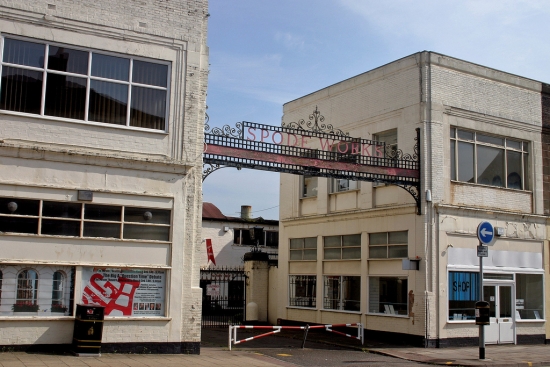A commission has been established in Stoke-on-Trent to ensure that relics of the Potteries’ industrial heritage are not lost in the rush towards regeneration. The group will be responsible for seeking the views of residents and presenting a report to the city council ahead of two public debates on the issue.

For many years the pottery industry was by far the largest employer in Stoke-on-Trent with generations of families working side by side in factories that, even today, remain household names.
Wedgwood, Spode, Doulton and Minton led the way, developing manufacturing techniques that made Stoke-on-Trent the ceramics capital of the world. The work was creative and rewarding and produced a number of notable artists and designers such as Clarice Cliff, Susie Cooper and Charlotte Rhead.
Another major contributor to the economy was mining. When the industry was nationalised in 1947, over 20,000 men were working in the pits of North Staffordshire. Wolstanton Colliery was the deepest in Europe, while in 1992 Trentham Colliery became the first to produce 2.5 million tonnes of saleable coal.
The pits were closed shortly after this notable achievement in a move that spelled the end of the British mining industry. Today an Asda store occupies the site of Wolstanton Colliery, while a 400 acre commercial and leisure development has sprung up in the area surrounding the record breaking pit.
Sadly, a similar fate has befallen the pottery industry. While ceramics are still manufactured in the city, the majority of large scale production has either ceased or been shifted overseas leaving historic properties like the original Spode works standing empty.
The loss of these industries, along with that of steel production, has led to the need for major redevelopment as Stoke-on-Trent seeks to reinvent itself as a post-industrial city that will attract inward investment.
Major construction projects are either underway or in the pipeline, including a 650,000 sq ft shopping centre, a new bus station and a city centre business district. The latter will involve the council moving from its current headquarters in Stoke Town which has led to concerns about the impact this will have on local businesses. However, a source has hinted at ‘exciting’ possibilities for the site but declined to elaborate on what these might be.
The role of the new heritage commission is to reconcile the Potteries’ industrial past with this urban renewal in order to inform future decisions affecting the city’s heritage. Three independent experts will chair the body which includes the former head of regeneration group Renew North Staffordshire, Peter Bounds.
He told the Sentinel; “The heritage of a community is its most distinctive and defining feature, and if you don’t protect it, everywhere will eventually look the same.
“So it’s important we have a policy for dealing with our heritage assets. What we want to do now is to test heritage issues in the context of making Stoke-on-Trent a place to do business.”
One issue Mr Bounds would like the commission to address is that of possible uses for the disused pottery factories and remaining bottle kilns. This autumn the former Spode works will, once again, play host to the British Ceramics Biennial showcasing the best of contemporary ceramic design from home and abroad but its future remains uncertain.

Councillor Ruth Rosenau, the cabinet member for regeneration and planning, says the first priority is to create jobs but she would also like to see a mixture of the old and the new with industrial buildings sitting side by side with the emerging commercial developments.
Other former industrial cities have managed to achieve this balance between creating an environment in which new businesses can prosper and protecting valuable heritage assets. In many cases former industrial properties have been converted to house small businesses or put to imaginative leisure use.
For evidence of this the heritage commission might like to look at the examples of cities like Sheffield, Leeds, Liverpool and Bristol which have all undergone extensive regeneration projects which successfully blend the old with the new. If the commission listens to the right advice, and the council has a clear strategy, there is no reason why Stoke-on-Trent can’t do the same.
No related posts found for this post.